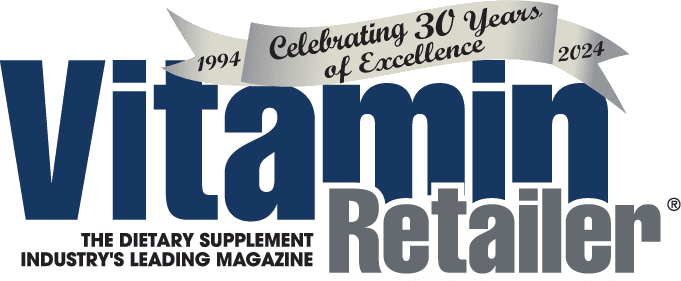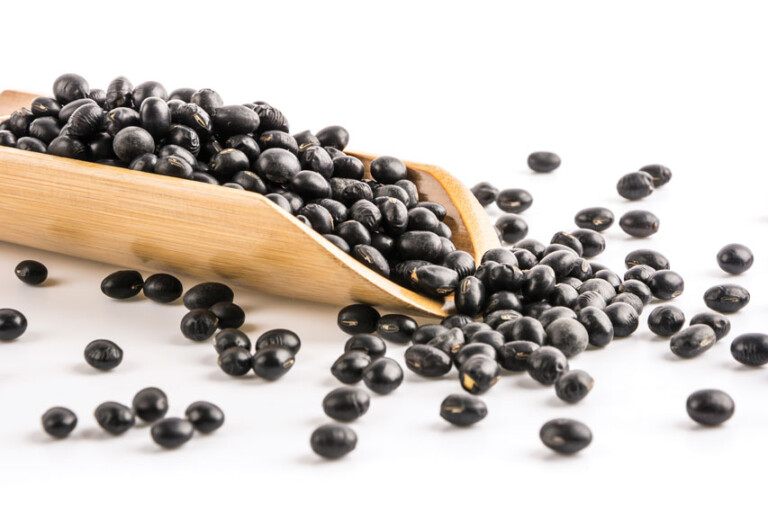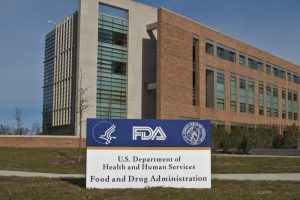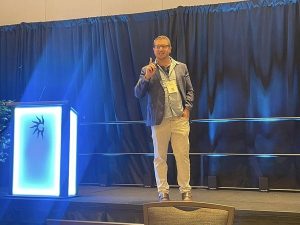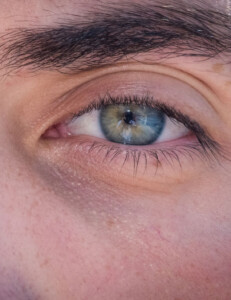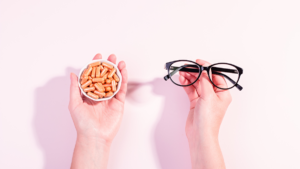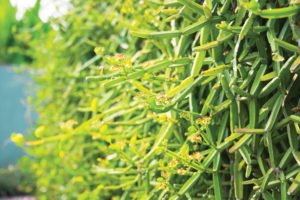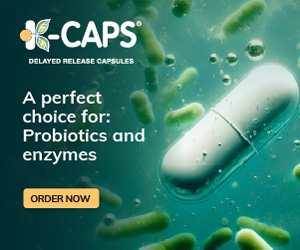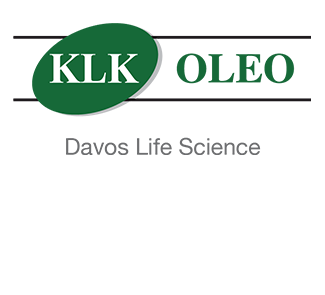Colored legumes, such as black soybean, common bean, cowpea and lentils, are sources of powerful antioxidant compounds called anthocyanins. Cyanidin-3-glucoside (C3G) is the major anthocyanin found in the above-mentioned colored legumes.1 The significance of this is that C3G has been shown in research to provide several potential health benefits in experimental research. This article will explore the clinical health benefits of a C3G-rich black soybean hull extract called CyaniMax C3G (BGG World), especially regarding eye health and metabolic syndrome. But first, let’s gain a bit more of an understanding about C3G and black soybean hull extract.
Experimental Research With C3G
Experimental research has demonstrated that the potential benefits of C3G include preventing oxidative damage in liver cells by hydrogen peroxide,2 alleviating alcohol-induced inflammation in liver cells,3 potential protection against pulmonary artery hypertension,4 restoring insulin signaling and reduces inflammation in hypertrophic adipocytes,5 protecting against intestinal barrier damage,6 inhibiting UVA-induced human skin cell injury,7 reducing endothelial cell dysfunction,8 reducing allergic airway inflammation,9 reducing retinal damage10 and reducing retinal inflammation.11
Also, C3G has demonstrated value in certain metabolic syndrome and diabetes-related disorders including the inhibition of vascular leakage in early diabetic retinopathy and neovascularization in advanced diabetic retinopathy,12 and protecting lens epithelial cells apoptosis (cell death) due to high glucose levels, as well as preventing cataract formation.13 Furthermore, animal and in-vitro research has demonstrated that C3G can improve obesity14 and triglyceride metabolism,15 reducing blood sugar levels,16-18 improving insulin sensitivity,19,20 and helping to regulate adipocyte (i.e., fat cell) hormones to help reduce obesity.21-23
Experimental Research With BSHE
Furthermore, back soybean hull extract (BSHE)—previously noted as a source of anthocyanins including C3G—was assessed in mice for its ability to inhibit the release of β-hexosaminidase (a marker associated with mast cells involved in allergies) and histamine. The results were that BSHE did inhibit the release of β-hexosaminidase and histamine, and C3G was identified as one of its active compounds. The researchers suggested that this information can be useful to design appropriate formulations of anthocyanin-based products to suppress allergic reactions.24 Other in-vitro research also demonstrated significant antioxidant activity associated with a C3G-rich BSHE.25
Human Research With BSHE/C3G
The experimental research on C3G and BSHE led researchers to study the effects in human clinical studies. Furthermore, this research was cited in two U.S. patents26,27 for the use of a C3G-rich BSHE to improve metabolic syndrome and eyesight. This extract, providing 30 percent C3G, is commercially known as CyaniMax C3G (BGG World).
Effects on Eyesight
Sixty male and female volunteers (7 to 28 years of age) with nearsightedness participated in an eight-week randomized controlled study28 testing the effects of BSHE/C3G on eyesight. The test design included comparison within each group and between groups. The tested persons were randomly divided into a test group and a control group with 30 individuals in each group, according to eyesight level. In the test group, each person orally took 300 mg of BSHE/C3G per day. In the control group, the placebo was administrated at the same dosage. Results were that after taking BSHE/C3G, the major uncomfortable symptoms of eyes were significantly improved. The improvement rate of eye dryness, blurred vision and eye tiredness were 60 percent, 56 percent and about 63 percent, respectively, each of which was statistically significant compared with the control group (P<0.05). Likewise, supplementation with BSHE/C3G apparently improved vision, with a statistically significant difference from vision before testing (P<0.01). The total efficiency ratio was up to 63 percent, and as compared with the control group there was a statistically significant difference (P<0.01), as indicated in the bar graph below.
Furthermore, it was observed that youths with myopia (nearsightedness) obtained significant improvement of both the naked eye distant vision and the uncomfortable symptoms of eyes after orally taking BSHE/C3G for eight weeks. It should be noted that anthocyanin is capable of effectively improving the recovery time for macula of human eyes, especially for the identification of middle and high spatial numbers in a dark environment. Consequently, anthocyanidin can increase the blood current of microcirculation on the eyeground, speeding the substance metabolism exchange and enhancing the protection effect on the capillary vessel, thus has the effect of improving the recovery time of the macula and night vision.
Effects on Metabolic Syndrome
Metabolic syndrome is a cluster of conditions that occur together, increasing your risk of heart disease, stroke and type 2 diabetes. Central obesity and insulin resistance are thought to represent common underlying factors of the syndrome, as well as increased triglyceride levels. Metabolic syndrome is increasingly common, and up to one-third of U.S. adults have it. Therapeutic approaches that reduce the levels of proinflammatory biomarkers and address traditional risk factors are particularly important in preventing cardiovascular disease and, potentially, diabetes.29 BSHE/C3G may be able to address some metabolic syndrome-related issues.
An eight-week controlled study30 was conducted to determine the effects of supplementation with BSHE/C3G vs. placebo on 62 patients (33 to 81 years of age) with metabolic syndrome. Subjects in the treatment group supplemented with 300 mg of BSHE/C3G per day (100 mg/3x daily) and patients in the control group were given a placebo at the same dosage. Results were that body weight dropped from 62.2±8.3 kg to 58.4±7.5 kg in the treatment group, a statistically significant difference (P<0.05). Comparatively, body weight only dropped from 61.8±7.8 kg to 60. 1± 7 .6 kg in the control group, a difference that was not significant. Total cholesterol and triglyceride were significantly reduced after administration in both the treatment group and the control group (P<0.01; P<0.05, respectively). There was a significant difference (P<0.01) in reduced levels of total cholesterol between the treatment and control groups after administration.
Before taking BSHE/C3G, subjects having normal blood pressure within the treatment and control groups numbered 16 cases (51.6 percent) and 17 cases (54.8 percent), respectively, with no obvious difference there between. After administration, however, the number of subjects with normal blood pressure in the treatment and control groups were 22 cases (70.9 percent) and 19 cases (61.3 percent), respectively, which was significantly different as compared with each other (P<0.05). In addition, blood sugar measured under conditions of excessive hunger and two hours after eating were significantly decreased in both the treatment and control groups. By contrast there was a statistically significant reduction in blood sugar in the treatment group two hours after dinner compared to the control group (P<0.01).
Based on the above, it has been observed that taking BSHE/C3G in addition to normal treatment can help with treatment of metabolic syndrome, contributing to reduction in levels of body weight, blood pressure, blood lipid and blood sugar. This research suggests that BSHE/C3G can be used for weight loss, blood lipid reduction and prevention of cardiovascular diseases.
Conclusion
BSHE/C3G offers a wide range of potential benefits, as well as benefits demonstrated in human clinical research for metabolic syndrome and eyesight. An important regulatory consideration for any brands wishing to utilize this material in their products and make claims regarding metabolic syndrome and eyesight, is that patents dictate that this can only be done when using the BSHE/C3G material known as CyaniMax C3G (BGG World). VR
References:
1 Jati IRAP, et al. Antioxidant Activity of Anthocyanins in Common Legume Grains. In Bioactive Food as Dietary Interventions for Liver and Gastrointestinal Disease. Academic Press; 2013.
2 Tan J, Li P, Xue H, Li Q. Cyanidin-3-glucoside prevents hydrogen peroxide (H 2 O 2)-induced oxidative damage in HepG2 cells. Biotechnol Lett. 2020 Nov;42(11):2453-2466.
3 Zhou Y, Wang S, Wan T, et al. Cyanidin-3-O-β-glucoside inactivates NLRP3 inflammasome and alleviates alcoholic steatohepatitis via SirT1/NF-κB signaling pathway. Free Radic Biol Med. 2020 Nov 20;160:334-341.
4 Ouyang S, Chen W, Gaofeng Z, et al. Cyanidin 3 O β glucoside protects against pulmonary artery hypertension induced by monocrotaline via the TGF β1/p38 MAPK/CREB signaling pathway. Mol Med Rep. 2021 May;23(5):338.
5 Molonia MS, Occhiuto C, Muscarà C, et al. Cyanidin-3-O-glucoside restores insulin signaling and reduces inflammation in hypertrophic adipocytes. Arch Biochem Biophys. 2020 Sep 30;691:108488.
6 Gan Y, Fu Y, Yang L, Chen J, Lei H, Liu Q. Cyanidin-3-O-Glucoside and Cyanidin Protect Against Intestinal Barrier Damage and 2,4,6-Trinitrobenzenesulfonic Acid-Induced Colitis. J Med Food. 2020 Jan;23(1):90-99.
7 Wu S, Hu Y, Bai W, Zhao J, Huang C, Wen C, Deng L, Lu D. Cyanidin-3-o-glucoside inhibits UVA-induced human dermal fibroblast injury by upregulating autophagy. Photodermatol Photoimmunol Photomed. 2019 Sep;35(5):360-368.
8 Wang Z, Zhang M, Wang Z, Guo Z, Wang Z, Chen Q. Cyanidin-3-O-glucoside attenuates endothelial cell dysfunction by modulating miR-204-5p/SIRT1-mediated inflammation and apoptosis. Biofactors. 2020 Sep;46(5):803-812.
9 Ma B, Wu Y, Chen B, Yao Y, Wang Y, Bai H, Li C, Yang Y, Chen Y. Cyanidin-3-O-β-glucoside attenuates allergic airway inflammation by modulating the IL-4Rα-STAT6 signaling pathway in a murine asthma model. Int Immunopharmacol. 2019 Apr;69:1-10.
10 Wang Y , Qi W , Huo Y , Song G , Sun H , Guo X , Wang C. Cyanidin-3-glucoside attenuates 4-hydroxynonenal- and visible light-induced retinal damage in vitro and in vivo. Food Funct. 2019 May 22;10(5):2871-2880.
11 Li X, Sun M, Long Y. Cyanidin-3-O-Glucoside Attenuates Lipopolysaccharide-Induced Inflammation in Human Corneal Epithelial Cells by Inducing Let-7b-5p-Mediated HMGA2/PI3K/Akt Pathway. Inflammation. 2020 Jun;43(3):1088-1096.
12 Zhao F, Gao X, Ge X, Cui J, Liu X. Cyanidin-3-o-glucoside (C3G) inhibits vascular leakage regulated by microglial activation in early diabetic retinopathy and neovascularization in advanced diabetic retinopathy. Bioengineered. 2021 Dec;12(2):9266-9278.
13 Song XL, Li MJ, Liu Q, Hu ZX, Xu ZY, Li JH, Zheng WL, Huang XM, Xiao F, Cui YH, Pan HW. Cyanidin-3-O-glucoside Protects Lens Epithelial Cells against High Glucose-Induced Apoptosis and Prevents Cataract Formation via Suppressing NF-κB Activation and Cox-2 Expression. J Agric Food Chem. 2020 Aug 5;68(31):8286-8294.
14 Tsuda T, Horio F, Uchida K, et al. Dietary cyanidin 3-O-beta-D-glucoside-rich purple corn color prevents obesity and ameliorates hyperglycemia in mice. J Nutr. 2003; 133: 2125-30.
15 Wei X, Wang D, Yang Y, et al. Cyanidin-3-O-β-glucoside improves obesity and triglyceridemetabolism in KK-Ay mice by regulating lipoprotein lipase activity. J Sci Food Agric. 2011; 91:1006-1013.
16 Tsuda T, Horio F, Uchida K, et al. Dietary cyanidin 3-O-beta-D-glucoside-rich purple corn color prevents obesity and ameliorates hyperglycemia in mice. J Nutr. 2003; 133: 2125-30.
17 Sasaki R, Nishimura N, Hoshino H, et al. Cyanidin 3-glucoside ameliorates hyperglycemia and insulin sensitivity due to downregulation of retinol binding protein 4 expression in diabetic mice. Biochem Pharmacol. 2007; 74: 1619-27.
18 Grace MH, Ribnicky DM, Huhn P, et al. Hypoglycemic activity of a novel anthocyanin-rich formulation from lowbush blueberry, Vaccinium angustifolium Aiton. Phytomedicine. 2009; 16: 406-15.
19 Sasaki R, Nishimura N, Hoshino H, et al. Cyanidin 3-glucoside ameliorates hyperglycemia and insulin sensitivity due to downregulation of retinol binding protein 4 expression in diabetic mice. Biochem Pharmacol. 2007; 74: 1619-27.
20 Guo H, Ling W, Wang Q, et al. Cyanidin 3-glucoside protects 3T3-L1 adipocytes against H2O2- or TNF-alpha-induced insulin resistance by inhibiting c-Jun NH2-terminal kinase activation. Biochem Pharmacol. 2008; 75: 1393-401.
21 Tsuda T, Ueno Y, Aoki H, et al. Anthocyanin enhances adipocytokine secretion and adipocyte-specific gene expression in isolated rat adipocytes. Biochem Biophys Res Commun. 2004; 316: 149-57.
22 Tsuda T, Ueno Y, Yoshikazu T, et al. Microarray profiling of gene expression in human adipocytes in response to anthocyanins. Biochem Pharmacol. 2006; 71: 1184-97.
23 Tsuda T, Ueno Y, Kojo H, et al. Gene expression profile of isolated rat adipocytes treated with anthocyanins. Biochim Biophys Acta. 2005; 1733: 137-47.
24 Hiemori-Kondo M, Morikawa E, Fujikura M, et al. Inhibitory effects of cyanidin-3-O-glucoside in black soybean hull extract on RBL-2H3 cells degranulation and passive cutaneous anaphylaxis reaction in mice. Int Immunopharmacol. 2021 May;94:107394.
25 United States Patent. Li et al. Black Soybean Hull Extract, Method for Obtaining, and Use Thereof. Patent no.: US 8,206,764 B2. Date of Patent: Jun. 26, 2012.
26 United States Patent. Li et al. Black Soybean Hull Extract, Method for Obtaining, and Use Thereof. Patent no.: US 8,257,756 B2. Date of Patent: Sep. 4, 2012.
27 United States Patent. Li et al. Black Soybean Hull Extract, Method for Obtaining, and Use Thereof. Patent no.: US 8,206,764 B2. Date of Patent: Jun. 26, 2012.
28 United States Patent. Li et al. Black Soybean Hull Extract, Method for Obtaining, and Use Thereof. Patent no.: US 8,257,756 B2. Date of Patent: Sep. 4, 2012.
29 Paoletti R, Bolego C, Poli A, Cignarella A. Metabolic Syndrome, Inflammation and Atherosclerosis. Vasc Health Risk Manag. 2006 Jun; 2(2): 145–152.
30 United States Patent. Li et al. Black Soybean Hull Extract, Method for Obtaining, and Use Thereof. Patent no.: US 8,257,756 B2. Date of Patent: Sep. 4, 2012.
Gene Bruno, MS, MHS, the provost for Huntington University of Health Sciences, is a nutritionist, herbalist, writer and educator. For more than 40 years he has educated and trained natural product retailers and health care professionals, has researched and formulated natural products for dozens of dietary supplement companies, and has written articles on nutrition, herbal medicine, nutraceuticals and integrative health issues for trade, consumer magazines and peer-reviewed publications. He can be reached at gene.bruno@hchs.edu.
